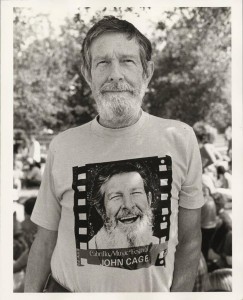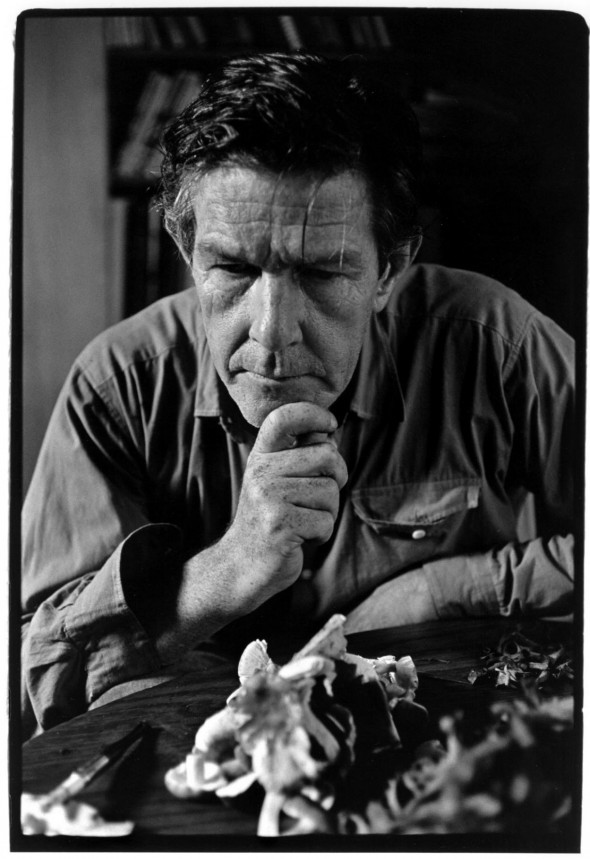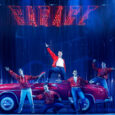A century after his birth and twenty years after his death the work and life of legendary musician John Cage will be celebrated in a two-day festival at the Sydney Opera House next weekend.
A number of compositions in honour of Cage, who redefined the concept and performance of music and inspired generations of musicians, will have their Australian premiere during the Centenary Celebration, alongside works by Brian Eno and Terry Riley.
Part of the Sydney Opera House’s new program, The Composers, the two-day festival will give audiences the opportunity to enjoy some of Cage’s legendary works including his chance-generated compositions Interdeterminacy and Variations 2, and pieces for prepared piano, Improvisations and Sonatas & Interludes.
The festival also presents a rare opportunity to experience Cage’s groundbreaking and controversial 4’33”, his most famous work.
Born in 1912, John Cage was one of the 20th century’s greatest music icons. His inventive and unorthodox ideas influenced the musical landscape and changed the way music was perceived – and how it was played.
Yarmila Alfonzetti, producer of classical music at the Sydney Opera House, says the Centenary Celebration is a creative homage to the avant-garde composer, musician and writer whose works still challenge conventional ideas of music and performance.
But for composer Lyle Chan the concerts in Cage’s honour are an excuse to revel in his wonderful music.
“Cage broadened the concept of music right to the edge: beyond that there is no music. There can be no wider definition than what he gave us,” Chan says.
As part of the festival, Chan will present a lecture on how and why Cage came to write 4’33”.
“It’s often called the silent piece. But John Cage meant the opposite of silence,” he says.
“In this work John Cage challenged us to reconsider what constitutes performance and music. It is in everything we hear and feel. It is in the sound of a page turning and the sound of your fellow audience members shuffling their feet. Everything is connected and the composer, the performer, the instrument – and even the air conditioner – are all part of the musical experience.
“The way it was traditionally performed was to walk to the keyboard, close the lid of the piano, read the score, and open the lid at the end. The audience would then hear the ‘music’ around them. In Cage’s view, music is continuous; only listening is intermittent.”
The work was highly controversial: Cage lost friends over it and in performances people often thought it was a joke. Many walked out – they still do, Chan says.
“It took four years for Cage to write the piece, to master the courage and rationale behind it. A lot of things came together in 4’33. The concept of emptiness and being aware of everything around you came from his interest in Zen Buddhism and the I Ching. Cage was also a fan of Henry David Thoreau’s Walden, or Life in the Woods and that influenced him powerfully.”
 Chan describes Cage’s music as both profound and funny.
Chan describes Cage’s music as both profound and funny.
“He was a very humerous man who would laugh at the drop of a hat. He loved to go looking for mushrooms – ‘foraging for fungi’ he called it – and even won a quiz about fungi in Italy. You cannot study Cage without becoming enthused about the things that interested him: Zen Buddhism, the I-Ching and mushrooms. He used all that in his music.
“I have a deep respect for Cage. There is no ego in his music. He released it, moving away from being the controller or creator of music to the acceptor of music. He saw himself simply as a channel for music. 4’33 is his most extreme example.
“A lot of jazz would not be possible without the release of the ego. Improvised music would not be possible.”
Chan is also looking forward to enjoying three performances by acclaimed New York six-piece ensemble, Bang on a Can All-Stars, recognised internationally for their experimental music.
“The band has been around for a very long time and has worked with Cage directly, and are really excited about performing some of his work,” Chan said.
Bang on a Can All-Stars will perform in front of a collection of rarely seen paintings by John Cage assembled for Sydney Opera House by the John Cage Trust.
The program also includes Musicircus, an experimental musical “happening” that epitomises Cage’s practice in the experimental fold. First devised in 1967, dozens of performers simultaneously enact different compositions. Each performer’s actions have been decided by the flip of a coin, the roll of the dice or a page of the I Ching.
This free musical convergence in the Western Foyer will be led by the exceptional musicians who make up the core of Ensemble Offspring, including Claire Edwardes, Jason Noble and Bree van Ryke.
John Cage Centenary Celebration: Friday, November 2 and Saturday November 3. For details go to sydneyoperahouse.com.



